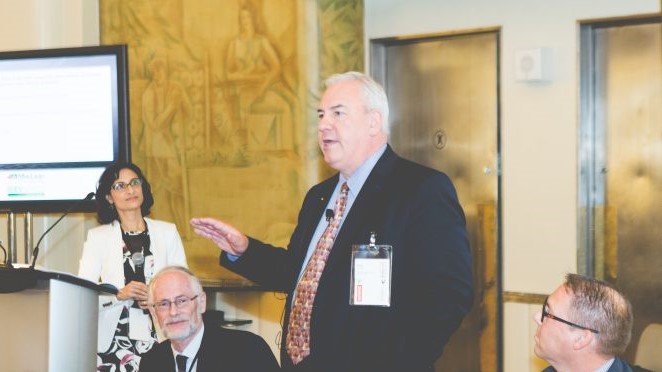Interview – CEMI CEO Doug Morrison: “The delay in getting approval for mining projects is almost all related to environmental impact”

Moreover, the failings at Brumadinho and Samarco were the result of a flawed approach to tailings management, Morrision said in an interview with the Global Business Reports:
GBR: What led CEMI to consider a new approach to the issue of tailings management?
Morrison: The industry has to recognize that the increasing delay in getting approval for mining projects is almost all related to environmental impact. This is all the general public really cares about. If you have failures in the 21st century that kill nearly 300 people, that is not a perception issue. These facilities at Brumadinho and Samarco had been out of production for many years, and nothing about the nature of these tailings ponds was going to change by simply leaving them there. If you rely on human beings to execute perpetual care and maintenance for decades, if not centuries, eventually mistakes will be made.
If we consider waste management in our own households, 30 years ago everything went to landfill, but in time we have learned to re-use and recycle. The same can be said for many industrial business sectors, but the mining industry has not adopted this kind of waste diversion.
GBR: What concerns to do you have with the current mainstream methods of tailings management?
Morrison: Simply, both methods – subaqueous deposition and dry stacking – require perpetual human intervention to manage. The conventional method of subaqueous deposition means that the waste has hazardous material within it, and as long as that material remains saturated with water behind a water-retaining structure, the process is manageable with continual leaching from the tailings facility to the water treatment plant. This is an ongoing process, whereby chemicals need to be continually added, sludge removed and the physical stability of the damn has to be maintained.
The dry-stacking approach extracts a lot of the water out of the tail, eliminating the concern over the facility’s physical stability. However, this does not stop the emission of fugitive dust, which is particularly common in arid countries where water shortage is endemic. Eventually, the plant roots in the vegetative cover will penetrate through the soil, and the contaminants in the tail will kill the plants. To prevent this, you need human intervention to regularly replace the plants in the vegetative cover so as to prevent the release of fugitive hazardous dust.
“Approximately only 20% of the material we send to a tailings facility is hazardous. The rest is actually benign and can be easily managed by artificial wetlands”
Doug Morrision, CEO, CeMI
GBR: In October, CEMI’s Mine Tailings Consortium completed a proposal to a major mining company on the future of tailings management. What does your proposal hope to achieve?
Morrison: We were hoping to accomplish two things. Number one, a radically different way to manage tailings, and CEMI’s suggestion is to split the waste stream into two, in what we call the SST process (separation, sequestration and treatment). Secondly, we were looking for a useful way to use the benign tail that is left behind. Once the contaminated material has been recycled or stored, then the benign material can be used for agricultural purposes.
GBR: Can you elaborate on how this approach to mine tailings management works?
Morrison: Approximately only 20% of the material we send to a tailings facility is hazardous. The rest is actually benign and can be easily managed by artificial wetlands – pseudo-natural environments that we can create in any climate. Rather than having one waste stream to the tailings facility, why not focus on separating out all the contaminants from the benign material. The 20% of hazardous material left over will also contain valuable material that can be recycled.
A lot of the contaminants are the reagents that come from flotation process, and these can be recovered and reused. The materials that cannot be reused, such as arsenopyrite, can be sealed in silica to become inert and then stored. The water outflow from the 80% of the tailings which is almost benign is set up in a series of cells; some of which to be treated with bioremediation, and others with faster-acting chemistry, to ensure it becomes completely benign.
We have also discovered that some of the benign materials in the waste stream, notably the mafic minerals, have value for the agricultural sector. Using mafic minerals from mine waste to elevate the yield potential of poor or damaged soils in the Amazon, for example, is the kind of integration we want to achieve in the long term.
GBR: Would the operating costs for this system be higher?
Morrison: We do not think they would be significantly higher in the short term, and companies could demonstrate to any community that the final product is completely benign. You could do a pilot project to prove this over the course of the year. A far greater cost is the long-term investment and time spent on industrial consultation to get mine permits and a social license to operate. The value of production in the time you save would dwarf the incremental increase in operating costs to maintain the SST system, so the net benefit to the industry would be significant from both a sustainable and a financial standpoint.
Related articles:
(This article first appeared in the Global Business Reports)




